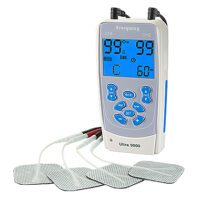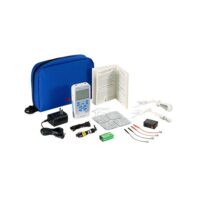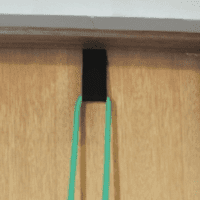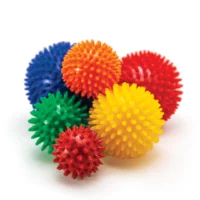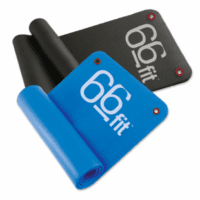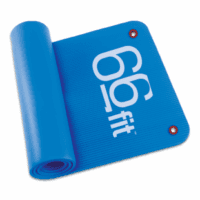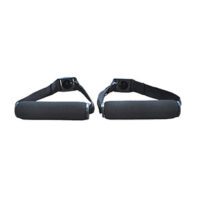Baseball Injuries
Article by John Miller

Baseball Injuries
Baseball, a Sport of Skill and Risk
Baseball, rapidly gaining popularity in Australia, offers a unique mix of skills like hitting, throwing, and sprinting. It’s a sport that opens doors to MLB and Olympic dreams and professional contracts. However, every player, from amateur to pro, faces the risk of injury, particularly in the upper limb.
The High Risk of Shoulder and Elbow Injuries
Recent studies highlight a startling fact: almost two-thirds of baseball injuries impact the shoulder or elbow. This is mainly due to the high-speed throws inherent in the sport. The risk skyrockets for pitchers, who are 2.6 times more likely to sustain these injuries than other players.
The Mechanics of Throwing: A Biomechanical Challenge
Throwing in baseball is no simple feat. Biomechanically, it’s a complex task. During a fast pitch, the shoulder rotates at a remarkable 12000 degrees per second, and the hand’s speed can reach nearly 1000 metres/second. These immense forces make the upper limb particularly vulnerable.

Preventing Shoulder Throwing Injuries: Balance is Key
The key to preventing these injuries lies in maintaining joint balance. This balance comprises two elements: the passive structures (like ligaments and joint capsules) and the active components (the muscles moving the joint). An imbalance in either can lead to injuries.
More info: Throwing Injuries
How Physiotherapy Can Help
A physiotherapist can play a crucial role in treating and preventing these injuries. They assess the shoulder’s balance, identifying any issues in the passive and active structures. Treatment may include mobilising tight joint capsules, strengthening exercises for muscles like the rotator cuff, and refining throwing techniques.
The Benefits of Physiotherapy for Baseball Players
Targeted Recovery and Rehabilitation
Physiotherapy offers tailored recovery plans, addressing specific injuries in the shoulder and elbow. This personalised approach accelerates healing and ensures a safe return to the field.
Prevention of Future Injuries
Regular physiotherapy sessions can strengthen muscles and improve joint stability, significantly reducing the risk of future injuries.
Improved Performance
By enhancing joint mobility and muscle strength, physiotherapy can lead to better throwing mechanics and overall performance on the field.
Holistic Health Benefits
Beyond injury recovery, physiotherapy promotes overall well-being, helping players maintain a balanced physical condition.
Education and Technique Refinement
Physiotherapists provide valuable education on proper techniques and body mechanics, crucial for preventing injuries in sports like baseball.
Safe Practices for Baseball Pitchers
Adolescent pitchers are particularly prone to these injuries. The American Sports Medicine Institute recommends monitoring fatigue levels, allowing regular breaks, avoiding pitching for multiple overlapping teams, and focusing on correct technique over velocity.
Conclusion: Enjoy the Game Safely
While aiming for that Olympic Gold or MLB contract, remember, the right biomechanics can help you enjoy baseball without undue injury risk. Always seek advice from a physiotherapist for the best practices in preventing and treating shoulder and elbow injuries.
What to Do?
If you’re experiencing any discomfort or want to improve your game, consulting a physiotherapist is a smart move. They can offer tailored advice and exercises to keep you in top form. That way, you’ll be playing your best baseball.
Related Articles
- Throwing Injuries – This article addresses injuries related to throwing, including rotator cuff injuries, which are common in sports like baseball that involve high-intensity throwing.
- Common Youth Arm Injuries – Understanding & Managing – Discusses various arm injuries common in youth sports, including baseball. It emphasises the importance of early intervention and adapting sports techniques to prevent arm injuries.
Common Muscle Injuries
A Physiotherapist's Guide
Introduction
Muscle injuries, presenting as muscle strain, pain or myalgia, are prevalent health issues affecting a wide range of individuals. This detailed guide, from a physiotherapist's perspective, delves into various muscle injuries, elaborating on their management, prevention, and the importance of professional advice. Explore the linked articles for an in-depth understanding of muscle injuries and their effective treatment.
Neck & Back Muscle Injuries: Causes and Solutions
- Back Muscle Pain: This pain often results from prolonged poor posture or physical overuse. Key to relief is engaging in exercises that strengthen the core muscles and improve posture, thereby alleviating the strain on the back.
- Neck Sprain: Caused by sudden, awkward movements, a neck sprain can benefit from a combination of gentle stretches and targeted strengthening exercises to restore flexibility and strength.
- Text Neck: A modern ailment resulting from extended mobile device use, text neck can lead to chronic pain. Regular breaks, posture-awareness, and neck-strengthening exercises are essential for prevention.
- Whiplash: Commonly occurring in car accidents, whiplash requires a careful approach including neck stabilisation exercises and controlled movement to encourage healing and prevent further injury.
Lower Limb Muscle Injuries: Understanding and Treating
- Hamstring Strain: Particularly common among athletes, particularly runners, this strain demands rest initially, followed by a carefully structured rehabilitation program focusing on gradual strength building and flexibility.
- Thigh Strain: Often seen in sports involving sprinting and jumping, thigh strains need a combination of rest, ice, compression, and elevation (RICE) in the initial stages, followed by carefully planned strengthening exercises.
- Groin Strain: This injury requires a nuanced approach, including sufficient rest and targeted exercises, to ensure a safe and effective recovery.
- Calf Muscle Tear: Key to recovery is a balance of rest, gentle stretching exercises, and a gradual return to full activity, ensuring the muscle heals correctly and strength is regained.
Upper Limb Muscle Injuries: Prevention and Care
- Golfer's Elbow and Tennis Elbow: Both these conditions involve inflammation of the tendons and require a rest period, followed by ice therapy and specific exercises tailored to strengthen the affected muscles.
- Corked Thigh: Resulting from direct impacts, these injuries demand immediate application of ice and a controlled, gradual exercise regime for recovery.
- DOMS, Fatigue-Related Cramps & Myalgia: Adequate rest, good hydration, and gentle stretching are crucial in alleviating these conditions.
- RSI: Regular stretching, ergonomic workplace adjustments, and taking breaks are key preventive measures for repetitive strain injury.
Systemic Causes of Muscle Pain: A Holistic View
- Fibromyalgia: This complex condition demands a holistic treatment approach, including exercise routines, stress management techniques, and sometimes medication.
- Rheumatoid Arthritis: Effective management combines medication, gentle exercise, and regular physiotherapy sessions.
Prevention and Management Strategies
- Regular Exercise: Regular physical activity helps maintain muscle strength and flexibility, reducing the risk of muscle injuries.
- Posture Improvement: Good posture, both in motion and at rest, is crucial for preventing muscle strain.
- Proper Warm-up and Cool-down: Adequate warm-up before and cool-down after physical activity is vital in preventing muscle strains and injuries.
- Ergonomic Adjustments: Making ergonomic adjustments at work and during daily activities can significantly reduce the risk of repetitive strain injuries and other muscle-related issues.
- Maintaining a Healthy Weight: Keeping a healthy weight reduces the strain on muscles, particularly in weight-bearing joints.
What to Do? Seeking Professional Advice
Consult a physiotherapist or doctor for personalised advice and treatment plans. Remember, early intervention can significantly improve recovery outcomes and prevent chronic problems.
Conclusion
While muscle injuries are common, effective management and prevention are achievable with the right approach and knowledge. Understanding the causes, symptoms, and various treatments available empowers individuals to take proactive steps in their recovery and prevention. For the most tailored and effective treatment, always seek the guidance of a professional physiotherapist.
Common Ligament Injuries
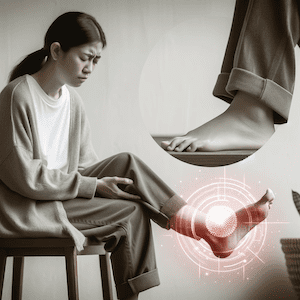

Ligament Injury
Ligament injuries frequently occur in various body parts, leading to pain and restricted movement. The most common sites include the knee, ankle, shoulder, wrist, hand, and spine.
Notably, knee injuries like ACL, PCL, MCL, and LCL sprains are prevalent.
Shoulder injuries often involve the AC joint, while wrist and hand issues can include thumb and finger sprains.
Spinal ligament injuries, such as back and neck sprains, and whiplash, are also significant. Understanding these injuries helps in prevention, early detection, and effective treatment.
- Ankle Ligament Injuries
- Knee Ligament Injuries
- Shoulder Ligament Injuries
- Wrist & Hand Ligament Injuries
- Spinal Ligament Injuries
Ankle Ligament Injuries
Ankle injuries often result from sudden twists or rolls, leading to sprains and strains.
Knee Ligament Injuries
Knee ligament injuries are among the most common and can severely impact mobility and quality of life.
- ACL Injury
- PCL Injury
- MCL Sprain
- LCL Sprain
- Posterolateral Corner Injury
- Patella Dislocation
- Superior Tibiofibular Joint Sprain
Shoulder Ligament Injuries
Shoulder ligament injuries can be debilitating, affecting a range of movements.
Wrist & Hand Ligament Injuries
Injuries in the wrist and hand are common, especially in sports and physical activities.
Spinal Ligament Injuries
Spinal ligament injuries can result from various causes, including posture issues and physical impacts.
Related Articles
- Ligament Tear - Common Ligament Injuries: Offers a comprehensive overview of ligament injuries across different body parts, including prevention, early detection, and effective treatment strategies.
- Knee Ligament Injury - A Physiotherapist's Guide & Tips: Provides insights into diagnosing knee pain, covering ligament issues among other concerns, and suggests pain relief methods through exercise and treatment.
- Common Ankle Ligament Injuries: A Physiotherapist's Guide: Discusses the treatment and prevention strategies for ankle ligament injuries, emphasising the importance of early intervention.
- Sprained Ankle Treatment & Recovery Guide: Offers detailed guidance on the recovery timelines for sprained ankles, highlighting the importance of restoring strength, motion, and function for a full recovery.
- Ankle Strapping: Complete Guide To Injury Prevention: Focuses on preventing ankle injuries through effective strapping techniques and discusses conditions like ankle arthritis and biomechanical issues.
- Sub-Acute Soft Tissue Injury: Explores the treatment and recovery process for various ligament injuries, including those affecting the knee, shoulder, wrist, hand, and spine.
- Sprained Thumb Treatment And Recovery Tips: Delivers practical tips for treating and recovering from a sprained thumb, along with general management strategies for wrist and hand pain.




